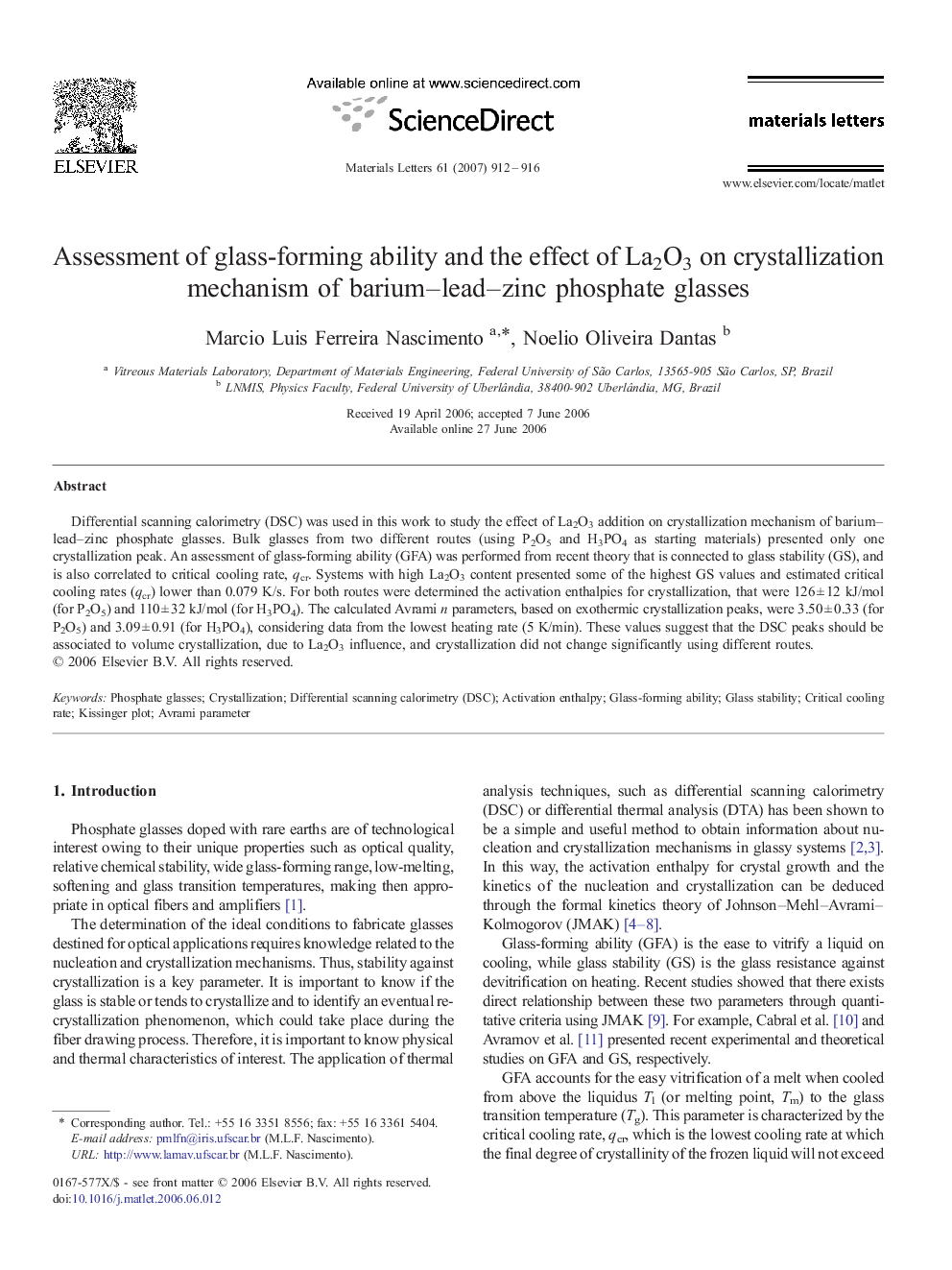| Article ID | Journal | Published Year | Pages | File Type |
|---|---|---|---|---|
| 1653533 | Materials Letters | 2007 | 5 Pages |
Differential scanning calorimetry (DSC) was used in this work to study the effect of La2O3 addition on crystallization mechanism of barium–lead–zinc phosphate glasses. Bulk glasses from two different routes (using P2O5 and H3PO4 as starting materials) presented only one crystallization peak. An assessment of glass-forming ability (GFA) was performed from recent theory that is connected to glass stability (GS), and is also correlated to critical cooling rate, qcr. Systems with high La2O3 content presented some of the highest GS values and estimated critical cooling rates (qcr) lower than 0.079 K/s. For both routes were determined the activation enthalpies for crystallization, that were 126 ± 12 kJ/mol (for P2O5) and 110 ± 32 kJ/mol (for H3PO4). The calculated Avrami n parameters, based on exothermic crystallization peaks, were 3.50 ± 0.33 (for P2O5) and 3.09 ± 0.91 (for H3PO4), considering data from the lowest heating rate (5 K/min). These values suggest that the DSC peaks should be associated to volume crystallization, due to La2O3 influence, and crystallization did not change significantly using different routes.
